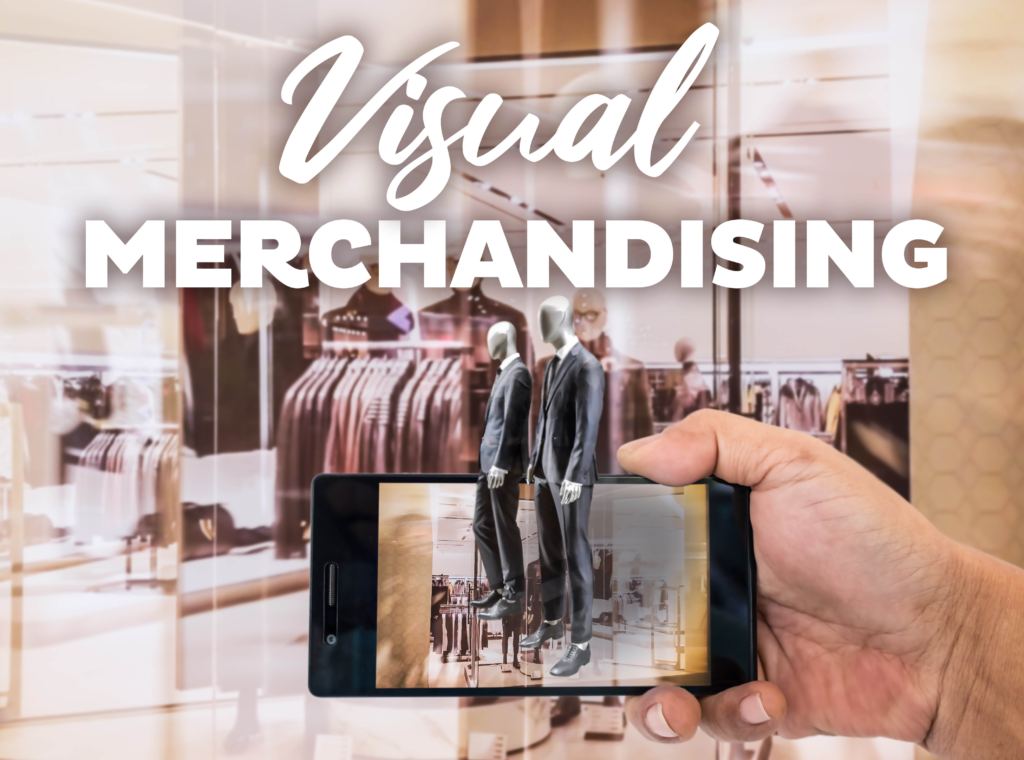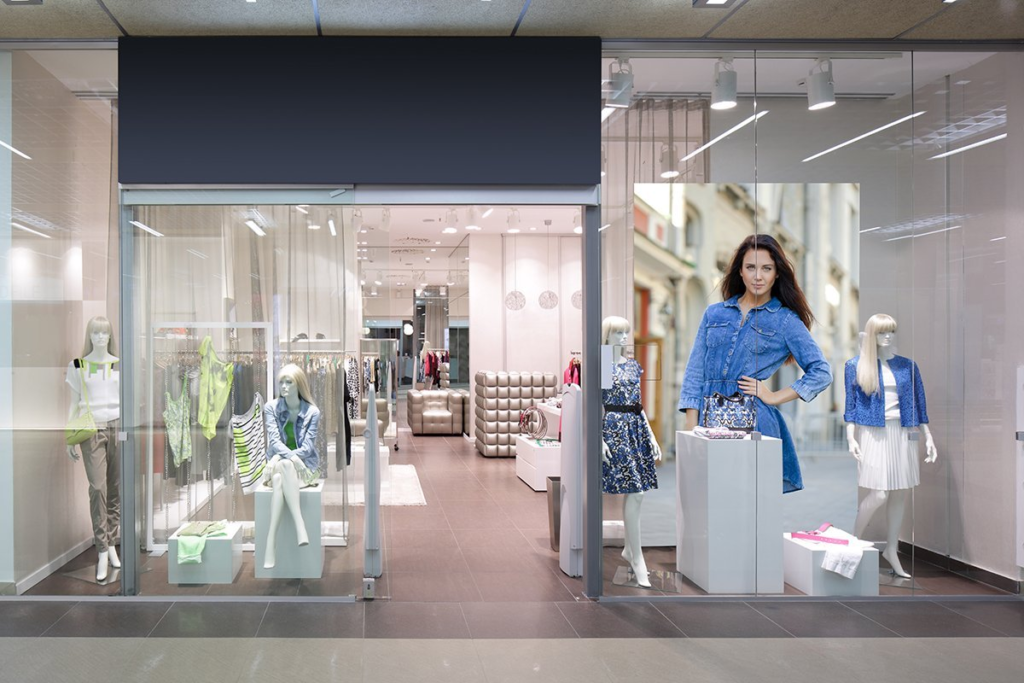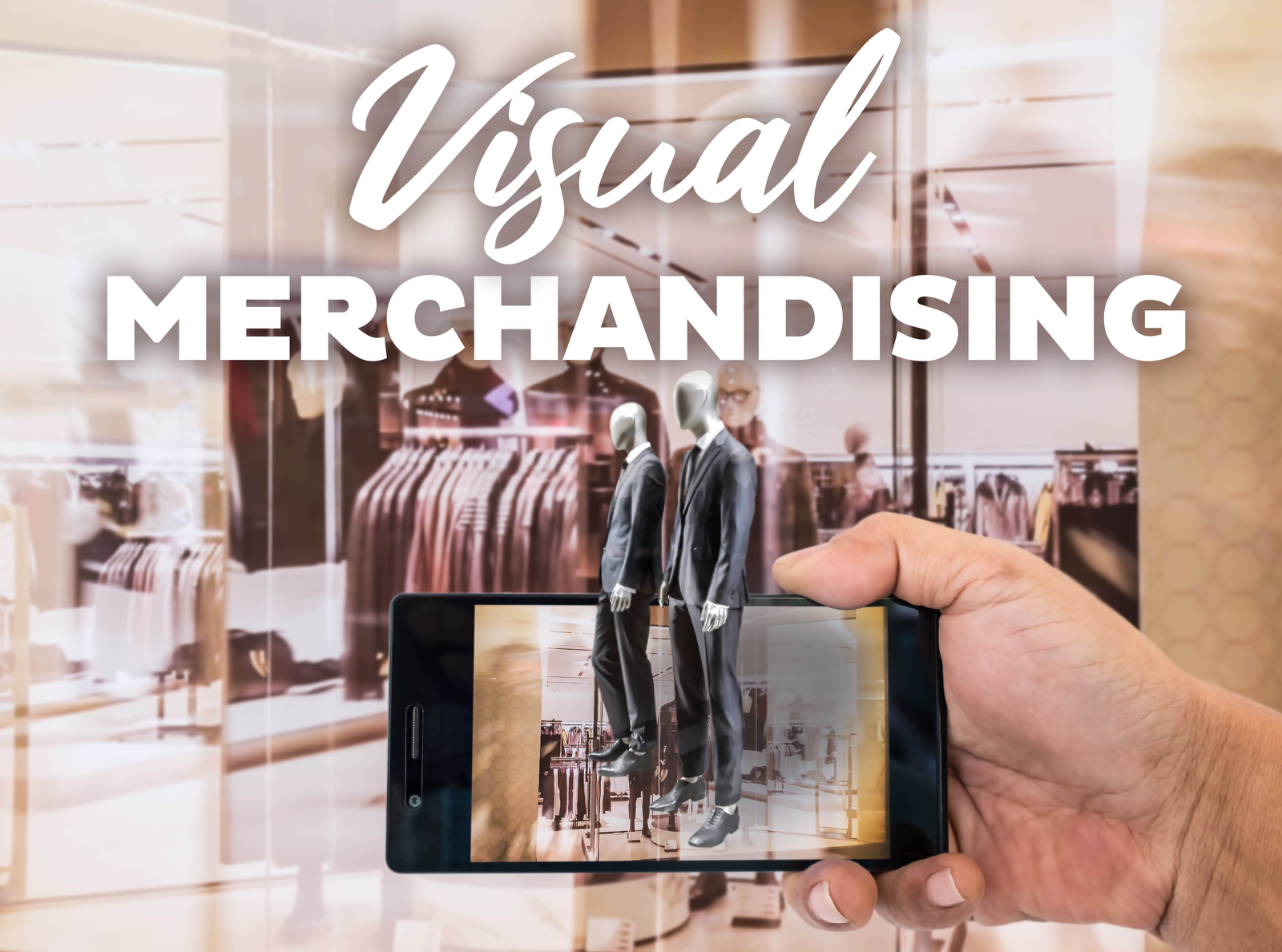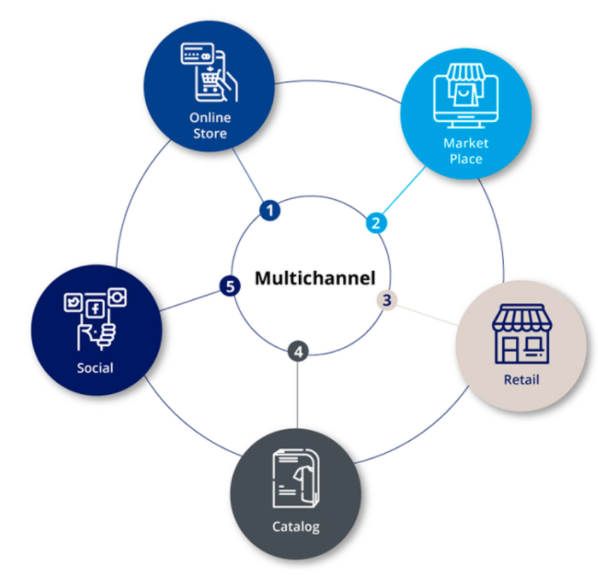Visual Merchandiser( 1 years course)
Visual Merchandiser click here
Brief Job Description
Individual in this position is responsible for implementing visual merchandising concepts and elements as
per guidelines laid down by the head office/store/various brands in the store. This person will also execute merchandising themes and plots as per business need.

Personal Attributes
The individual needs to be physically fit, innovative and aesthetically creative to be able to execute his/her
role efficiently. He/she should demonstrate work organization, self-management, communication and
interpersonal skills. He/she should be self-motivated and should be able to work in collaboration with
multiple teams.
Enhance store visibility by implementing attractive visual displays to support store profitability
Description
This OS unit is about increasing the visual appeal of the store so as to entice and generate the interest of
customers in product purchases.
Elements and Performance Criteria
Conform to visual merchandising guidelines – company norms, market trends and brand guidelines
To be competent, the user/individual on the job must be able to:
PC1. identify company trends with respect to products and marketing thereof
PC2. identify target customer base, category-wise sales pattern, market trends
PC3. identify elements such as available space, lighting, props and visual merchandising
accessories in order to design relevant and effective plots and themes
PC4. identify possible problems in putting layouts together and work out ways of sorting them out
PC5. create displays that achieve the visual effect as required and are consistent with the
companys visual design policy
PC6. follow company procedures for using ladders, tools and equipment safely
PC7. use the design brief to identify the focal points of the display
Enhance cross category merchandising and increase add-on sales
To be competent, the user/individual on the job must be able to:
PC8. identify seasonality and past sales patterns with respect to the merchandise category
PC9. identify related categories across which merchandising themes and events can be planned
PC10. match customer needs to category advantages and benefits
PC11. identify opportunities for cross selling across related categories in order to design effective
schemes
PC12. design and validate relevant offers and merchandising themes
PC13. implement relevant offers and merchandising themes
PC14. position merchandise, graphics and signs according to guidelines and in ways that attract the
attention and interest of customers and give customers the information they need
PC15. implement and adhere to themes and plots in accordance with the above variables so as to
maximize returns for the desired category in the store
PC16. choose shapes, colors and groupings that are suited to the purpose and style of the display
PC17. check that the finished display meets health and safety guidelines and legal requirements
Map product offers to theme based visual merchandising plans
To be competent, the user/individual on the job must be able to:
PC18. list tasks and activities involved in the merchandising plan
PC19. create visual displays based on the requirements set by the marketing department
PC20. finalize designs and create detailed floor plans
PC21. assemble and dismantle displays, if and when required
PC22. assess resources involved in executing the merchandising plan
PC23. ensure the availability of resources required to execute the merchandising plan
PC24. implement merchandising plan/theme at the store
PC25. assess the merchandising plan and record observations related to the same
PC26. measure performance of merchandising plans/themes
PC27. group merchandise appropriately for the purpose and style of display, the selling features of
the merchandise and the visual effect needed under the design brief
Focus on sales improvement of specific product categories
To be competent, the user/individual on the job must be able to:
PC28. keep abreast of information on faltering categories, slow moving categories and ageing
products in store

PC29. create innovative merchandising themes and plots to improve performance of such
categories for the specific store
PC30. validate merchandising themes and plots with all concerned stakeholders
PC31. implement the approved merchandising themes and plots
PC32. evaluate performance of merchandising themes and plots post implementation
PC33. accurately identify health, safety and security arrangements from plans, elevations and
drawings
Knowledge and Understanding (KU)
The individual on the job needs to know and understand:
KU1. relevant legislation, standards, policies, and procedures followed in the company
KU2. relevant legislation, standards, policies, and procedures followed by brands
KU3. various props used in merchandising themes and plots
KU4. vendors and supplier details for procurement and their terms and conditions
KU5. how to identify the health, safety and security arrangements needed for layouts
KU6. what layout design is and its part in effective visual design practice
KU7. the techniques of layout design, including drawing conventions and standards
KU8. who can make decisions when you have problems with layouts
KU9. how to work out what activities and resources you need to put layouts together
KU10. how to create and use focal points within a display
KU11. how to put together merchandising displays for use inside the store
KU12. how to choose and combine dimension, shape, color, texture and lighting to create the visual
effect you need from a display
KU13. how to display different types of merchandise and props
KU14. how to choose a suitable type of grouping merchandise
KU15. how to use different types, directions and levels of light to create atmosphere
KU16. how displays can achieve add-on sales and why this is important
KU17. why is it expected to install creative displays and to be aware of trends
KU18. different approaches to displaying merchandise and how to choose the best approach
KU19. how props, prototypes, dressing and fixtures create visual effects
KU20. how to identify the selling features of merchandise to be used in displays
KU21. the legal requirements which apply to pricing and ticketing
KU22. why different kinds of merchandise need different approaches to display, and what these
approaches are
KU23. the dressing techniques to use for different types of merchandise
KU24. business profitability parameters return of shelf space
KU25. category merchandising norms
KU26. consumer behavior
KU27. schematic presentations of merchandising themes and plots
KU28. effects of seasonality on different categories of products being sold
KU29. factors affecting customers buying behavior for a particular category
KU30. store sales data for various categories
Generic Skills (GS)
User/individual on the job needs to know how to:
GS1. complete data sheets on events being organized
GS2. generate accurate reports as required by concerned stake holders
GS3. read and understand relevant documents received from the head office/industry /brand
owners/store

GS4. read and understand documents critical for stores performance
GS5. read and interpret critical job-related reports
GS6. explain merchandising themes and plots to store members and customers
GS7. understand customers queries regarding the implemented scheme
GS8. answer queries using appropriate communication skills
GS9. accept and communicate feedback on the plans/schemes
GS10. communicate with vendors as per requirements
GS11. make decisions pertaining to the concerned area of work
GS12. plan and organize all necessary tasks to ensure smooth implementation of merchandising
themes and plots
GS13. ensure thorough implementation so as to enhance customer experience
GS14. remove all process glitches possible in the plan/scheme
GS15. anticipate problems and act to avoid them where possible
GS16. resolve problems related to sourcing and allocating of resources during implementation of
merchandising plans
GS17. identify immediate or temporary solutions to resolve delays
GS18. identify customer buying behavior and plan merchandising schemes accordingly
GS19. analyze data collected in reports to be able to plan future merchandising events
GS20. apply, analyze, and evaluate the information gathered from observation, experience,
reasoning or communication, as a guide to thought and action
Comply to store policies, merchandising norms and statutory
regulations while executing themes and plots
Description
This OS unit is about complying to all merchandising and statutory guidelines as laid down by the various
brands, by the store and by the industry.
Elements and Performance Criteria
Ensure compliance to all store policies, vendor guidelines and statutory regulations for specific
merchandising themes & plots
To be competent, the user/individual on the job must be able to:
PC1. identify and adhere to store policies and budgets with respect to visual merchandising
PC2. identify and adhere to statutory guidelines with respect to visual merchandising
PC3. describe vendor guidelines with respect to visual merchandising
PC4. describe category and brand norms with respect to visual merchandising
PC5. check the suitability and availability of merchandise with the relevant decision-makers
PC6. reach agreement with decision-makers concerning realistic arrangements and timescales for
supply of merchandising elements
PC7. promptly make other arrangements to get hold of merchandise if it is not available within your
timescales and cost limits
Knowledge and Understanding (KU)
The individual on the job needs to know and understand:
KU1. relevant legislation, standards, policies, and procedures followed by company and brand
KU2. service request procedures, tools, and techniques
KU3. how to compare selected merchandise with the display requirements
KU4. how to check whether merchandise is available
KU5. how to arrange for merchandise to be delivered
KU6. the different purposes of displays and their use in visual merchandising
KU7. different approaches to use for displaying different kinds of merchandise
KU8. the decision-makers who you need to agree your choices of merchandise with
KU9. the people who can supply the merchandise you need for display
KU10. category merchandising norms
KU11. brand policies, statutory regulations
Generic Skills (GS)
User/individual on the job needs to know how to
GS1. complete data sheets on events being organized
GS2. generate accurate reports as required by concerned stakeholders
GS3. read and understand relevant documents received from the head office/industry /brand
owners/store
GS4. read and interpret notices and circulars related to guidelines and norms
GS5. explain guidelines and directives to team members and customers
GS6. complete tasks allocated by relevant stakeholders
GS7. accept and communicate feedback on the plans/scheme
GS8. communicate with vendors as per requirements
GS9. make decisions pertaining to the concerned area of work
GS10. plann and organize implementation of merchandising themes and plots
GS11. ensure thorough implementation so as to enhance customer experience
GS12. remove all process glitches possible in the plan/scheme
GS13. anticipate problems and act to avoid them where possible
GS14. resolve problems related to sourcing and allocating of resources during implementation of
merchandising plans
GS15. identify customer buying behavior and plan merchandising schemes for the specific product
category
GS16. analyze data collected in reports to be able to plan future merchandising events
GS17. apply, analyze, and evaluate the information gathered from observation, experience,
reasoning or communication, as a guide to thought and action
Collect and analyze data to track the visual impact of promotions and events
Description
This OS unit is about collecting , analyzing and reporting impact of promotions and events.
Elements and Performance Criteria
Conduct store audits to identify and report impact of promotions and events on stock status
To be competent, the user/individual on the job must be able to:
PC1. track visual impact of all promotions and events organized by the head office/brands/store
PC2. identify parameters to be observed and recorded to assess impact of promotions and events
PC3. compare current data trends with past data trends
PC4. agree suitable standards for assessing the effect of displays and layouts
PC5. draw inferences that are reasonable in terms of the purpose of the display and customers
responses to it
PC6. identify improvements in the way visual merchandising is carried out at the store
PC7. report findings and recommendations clearly to decision-makers
PC8. assess information fairly when reviewing the effect of displays and layouts
Conduct audit of the display elements and assess their impact on the visual display
To be competent, the user/individual on the job must be able to:
PC9. check that all the parts of the display are suitable for the purpose of the display and meet
requirements

PC10. check that the display meets requirements for easy access, safety and security
PC11. identify safety and security risks to the display and choose suitable ways of reducing risks
PC12. promptly make any adjustments within scope of authority that are needed to achieve the
visual effect and to make the display safe and secure
PC13. regularly check the displays visual effect from the customers view
PC14. promptly report to the right person any problems and risks that are beyond the scope of
responsibility
PC15. gather enough information to allow you to make judgments about customers responses to
displays and layouts
PC16. accurately interpret information about customers responses
KU4. the meaning of validity and reliability in relation to interpreting information about customers
responses to displays and layouts
KU5. how to judge fairly the evidence of customers responses against the agreed standards for
displays and layouts
KU6. how to draw reasonable conclusions about the effect of displays and layouts, bearing in mind
the purpose of the display or layout and customers responses to it
KU7. how to recognize improvements to be made to the way visual merchandising is carried out
at the store
Knowledge and Understanding (KU)
The individual on the job needs to know and understand:
KU1. stock movement of different product categories in the store
KU2. ageing stocks in various categories
KU3. the company’s visual design and merchandising policy
KU8. how to present findings and recommendations clearly to decision-makers
KU9. how to evaluate the visual effect of displays
KU10. how light, color, texture, shape and dimension combine to achieve the visual effects needed
for a display
KU11. different approaches to using displays for different types of merchandise
KU12. the dressing techniques for different types of merchandise
KU13. how much authority one has to change displays
KU14. company procedures and requirements for collecting information about customers responses
to displays
KU15. marketing basics
KU16. consumer behavior
KU17. market trends
KU18. information on relevant themes and plans executed in the past
KU19. information on relevant themes and plans by competition/industry
KU20. different ways of analyzing promotion data
KU21. promotional strategies
Generic Skills (GS)
User/individual on the job needs to know how to:
GS1. document reports
GS2. read collected promotion data
GS3. explain the importance of collecting promotion/event data to the store team
GS4. communicate the efficacy of the promotion/event to relevant stake holders
GS5. convey feedback of promotion to organizers of the promotion/event
GS6. makes appropriate decisions regarding the responsibilities of the job role
GS7. plan and organize promotion/feedback data collected
GS8. incorporate customer feedback in the data analysis
GS9. think through the problem, evaluate the possible solution(s) and suggest an optimum /best
possible solution(s)
GS10. use the existing data to arrive at specific data points
GS11. use the existing data points to generate required reports for business
GS12. apply, analyze, and evaluate the information gathered from observation, experience,
reasoning, or communication, as a guide to thought and action
Maintain visual merchandising elements in the store as per brand and store guidelines
Description
This OS unit is about setting, maintaining store displays/fixtures and refreshing existing displays/fixtures
according to brand and store guidelines.
Elements and Performance Criteria
Ensure maintenance and refreshing of existing displays, fixtures and other visual merchandising elements
in line with company, store and brand guidelines
To be competent, the user/individual on the job must be able to:
PC1. implement checks and balances to ensure up-keep of tools, displays, fixtures and
props of existing themes
PC2. organize for new props in case of damaged/ distressed props, displays, fixtures
and tools
PC3. establish uniformity of displays across stores
PC4. collect and record accurate information on price changes
PC5. give accurate, up-to-date price information to the staff who need it
PC6. regularly check price marking and promptly sort out any pricing problems you
spot
PC7. make sure that stock replenishment plans are up-to-date and realistic
PC8. deal with out-of-date or deteriorating stock in line with company policy and any
relevant laws
PC9. involve staff in spotting potential improvements to the way stock is organised and
presented
PC10. get permission from the right person, where necessary, to improve the way stock
is organised and presented
PC11. make sure that you maintain customer goodwill and staff morale while stock is
being reorganized
PC12. ensure compliance to all safety measures
Knowledge and Understanding (KU)
The individual on the job needs to know and understand:
KU1. elements of visual merchandising like props, fixtures etc.
KU2. brand norms with respect to visual merchandising elements
KU3. organizational norms with respect to visual merchandising elements

KU4. statutory norms with respect to visual merchandising elements
KU5. process of changing/modifying/updating visual merchandising elements
KU6. how to collect and record information about prices
KU7. how to check stock rotation and the quality of goods on display
KU8. what can happen to stock that is not stored correctly or renewed as needed
KU9. how to replenish and rotate stock and deal with sub-standard goods
KU10. how to check pricing and price marking, correct mistakes and change prices
KU11. why it is important to record price changes accurately
KU12. brand policies, statutory regulations
KU13. how to maintain visual merchandising elements
KU14. most commonly used processes to maintain tools, displays, fixtures and props of existing
themes
Generic Skills (GS)
User/individual on the job needs to know how to:
GS1. document checks and balances
GS2. read about new processes/tools
GS3. interpret instructional documents such as safety rules, operating and maintenance
instructions, and procedure manuals
GS4. discuss task lists, schedules, and work-loads with co-workers
GS5. give clear instructions to store members
GS6. make decisions pertaining to the concerned area of work
GS7. plan and organize feedback files/documents
GS8. manage relationships with customers who may be stressed, confused, or angry
GS9. build customer relationships and use customer centric approach
GS10. capture, identify and act quickly on changing in-store conditions compared to others brands
GS11. accurately analyze and interpret the findings for key stakeholders to provide actionable
solutions
GS12. apply, analyze, and evaluate the information gathered from observation, experience,
reasoning, or communication, as a guide to thought and action
Update self on industry trends and best practices through continuous learning and innovation
Description
This OS unit is about keeping abreast of industry trends and leveraging best practices.
Elements and Performance Criteria
Identify opportunities for resolving problems and improving business operations
To be competent, the user/individual on the job must be able to:
PC1. collect information about business operations from relevant sources to evaluate
the potential for improvement within ones area of responsibility
PC2. monitor and analyse information sufficiently to reveal any actual or potential
problems
PC3. encourage staff and colleagues to identify potential improvements and to
comment constructively on others ideas
PC4. assess potential improvements for their relevance, practicality, consistency with
organization policy and style and ease of implementation
PC5. select ideas for suggestion and implementation which offer the greatest
potential for maximizing the benefits to the business and the client
Recommend improvements to business operations Contribute to the implementation of improvements to business operations Recommend improvements to business operations Contribute to the implementation
of improvements to business operations
To be competent, the user/individual on the job must be able to:
PC6. make recommendations for improvements to management in a form which is
suitable for their use and supported by relevant information
PC7. explain the benefits which improvements could bring and the resources needed
to implement improvements
PC8. communicate appropriately to the decision makers
PC9. give decision makers adequate opportunities to ask questions and to seek
clarification
PC10. monitor and evaluate information about improvements and their purpose to find
out whether they are effective
PC11. confirm and clarify the content and time-scales of implementation with decision
makers
PC12. explain plans to relevant individuals in a manner which encourages
understanding and effective implementation
PC13. give appropriate support, encouragement, advice and orientation to individuals
for as long as is necessary to achieve effective implementation
PC14. seek advice and support as soon as possible when specific implementation
problems come to light
PC15. demonstrate, in your behavior, commitment to achieving the benefits of the
improvement throughout implementation
Conduct market visits to keep abreast of industry best practices and trends
To be competent, the user/individual on the job must be able to:
PC16. identify market trends and running offers from comparative brands
PC17. share data and relevant reports with concerned stakeholders
PC18. co-create promotions and offers as per business demand
PC19. study success stories and examples
Leverage & share experiences from wholesale and brand stores to ensure best practice sharing
To be competent, the user/individual on the job must be able to:
PC20. identify running offers and their returns from wholesale and brand stores
PC21. share data with store managers and marketing supervisors
Knowledge and Understanding (KU)
The individual on the job needs to know and understand:
KU1. how to identify where and the reasons why standards are not being met
KU2. how to determine the action needed to correct problems and deviations from standards
KU3. how to identify how performance can be improved or enhanced against standards
KU4. how to select and use different approaches to generating improvement ideas from staff
KU5. the organizations quality standards and norms
KU6. organization systems, procedures and policies that are relevant to ones area of responsibility
KU7. how to determine and assess the benefits which improvements could bring against the
resources which would need to be expended
KU8. how to develop proposals for improvements which relate to the organizations policy and
standards
KU9. how to disseminate, present and communicate improvements and benefits/expenditure
KU10. the effect of his/her communication and behavior, whilst explaining improvements, that can
have on staffs response to implementation plans
KU11. industry best practices
KU12. international benchmarks
KU13. comparative brands
KU14. running offers and their effectiveness within and outside the company
KU15. how to design effective promotions and offers
KU16. usage of relevant tools to present promotions in the most efficient manner
KU17. consumer behavior
KU18. market trends
KU19. marketing basics
Generic Skills (GS)
User/individual on the job needs to know how to:
GS1. document reports
GS2. write memos and e-mail to customers, co-workers, and vendors
GS3. read about new products and services with reference to the organization and also from
external forums such as websites and blogs
GS4. keep abreast with the latest knowledge by reading brochures, pamphlets, and product
information sheets
GS5. read comments, suggestions, and responses to Frequently Asked Questions (FAQs) posted
on the helpdesk portal
GS6. discuss task lists, schedules, and work-loads with co-workers
GS7. question customers appropriately in order to understand the nature of the problem and
make a diagnosis
GS8. make decisions pertaining to the concerned area of work
GS9. plan and organize service feedback files/documents
GS10. organize and complete multiple projects simultaneously
GS11. build customer relationships and use customer centric approach
GS12. think through the problem, evaluate the possible solution(s) and suggest an optimum /best
possible solution(s)
GS13. identify immediate or temporary solutions to resolve delays
GS14. use the existing data to arrive at specific data points
GS15. use the existing data points to generate required reports for business
GS16. strong visual aesthetic, ability to think and act creatively to implement appealing visual
GS17. apply, analyze, and evaluate the information gathered from observation, experience,
reasoning, or communication, as a guide to thought and action
Liaise effectively with internal and external stakeholders to effectively implement visual merchandising plans
Description
This OS unit is about liaisoning and collaborating with various stakeholders to build and strengthen
relations and carry out responsibilities as per business requirements in a smooth manner.
Scope
The scope covers the following :
Establish working relationships with in-store staff, marketing teams and external stakeholders
Build and improve vendor relationships as per business requirement
Elements and Performance Criteria
Establish working relationships with in-store staff, marketing teams and external stakeholders
To be competent, the user/individual on the job must be able to:
PC1. identify external stakeholders and the nature of their interest in the activities and
performance of the organisation

PC2. establish working relationships with relevant internal and external stakeholders
PC3. recognise and respect the roles, responsibilities, interests and concerns of stakeholders and
particularly in situations of matrix management, their managers requirements
PC4. create a climate of trust and mutual respect, particularly where one has no authority, or
shared authority, over those he/she is working with
PC5. understand difficult situations and issues from stakeholders perspectives and provide
support, where necessary, to move things forward
PC6. provide stakeholders with appropriate information to enable them to perform effectively
PC7. consult stakeholders in relation to key decisions and activities and take account of their
views, including their priorities, expectations and attitudes to potential risks
PC8. fulfil agreements made with stakeholders and let them know
PC9. advise stakeholders promptly of any difficulties or where it will be impossible to fulfil
agreements
PC10. identify and resolve conflicts of interest and disagreements with stakeholders in ways that
minimize damage to work and activities and to the stakeholders involved
PC11. monitor and review the effectiveness of working relationships with stakeholders in order to
identify areas for improvement
PC12. seek and provide feedback in order to improve ones own and stakeholders performance
PC13. monitor wider developments in order to identify issues of potential interest or concern to
stakeholders in the future and to identify new stakeholders
PC14. enhance store team awareness about visual merchandising and its importance
PC15. collaborate with team to create design themes and plans and to ensure smooth and efficient
implementation of events
PC16. collaborate with business, sales managers and retail managers to discuss sales strategies
Build and improve vendor relationships as per business requirement
To be competent, the user/individual on the job must be able to:
PC17. identify resources needed for implementation of visual merchandising
guidelines/events/themes
PC18. identify vendor support required for store specific events
PC19. liaison with vendor to ensure availability of required resources in a timely manner
PC20. adhere to checklist for vendor payments
PC21. ensure vendor meets the terms and conditions of business
Knowledge and Understanding (KU)
The individual on the job needs to know and understand:
KU1. the benefits of developing productive working relationships with stakeholders
KU2. how to identify organizations stakeholders, including background information and the nature
of their interest in the organization
KU3. principles of effective communication and how to apply them in order to communicate
effectively with stakeholders
KU4. why it is important to recognize and respect the roles, responsibilities, interests and
concerns of stakeholders
KU5. the importance of creating a climate of trust and mutual respect where one has no authority,
or shared authority, over those he/she is working with
KU6. the importance of understanding difficult situations and issues from other perspectives and
providing support, where necessary, to move things forward
KU7. how to identify and meet the information needs of stakeholders
KU8. how to consult with stakeholders in relation to key decisions and activities
KU9. how to identify conflicts of interest with stakeholders and the techniques that can be used to
manage or remove them.
KU10. how to manage the expectations of stakeholders
KU11. how to monitor and review the effectiveness of working relationships with stakeholders
KU12. how to get and make effective use of feedback from stakeholders
KU13. current and emerging trends and developments in your industry or sector
KU14. sector-specific legislation, regulations, guidelines and codes of practice
KU15. mechanisms for consulting with stakeholders on key decisions and activities
KU16. the organizations planning and decision-making processes
KU17. standards of behavior and performance that are expected in the organization
KU18. mechanisms in place for monitoring and reviewing the effectiveness of working relationships
with stakeholders
KU19. vendor management









